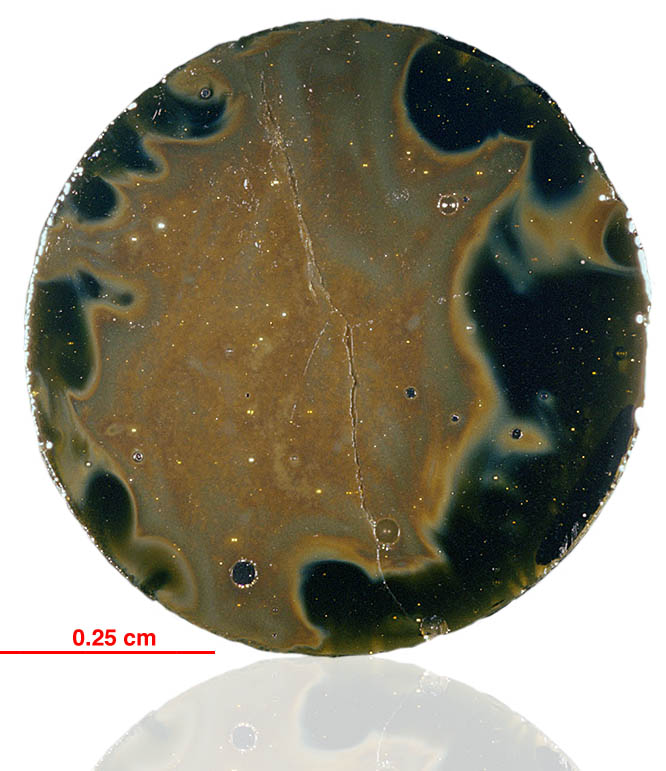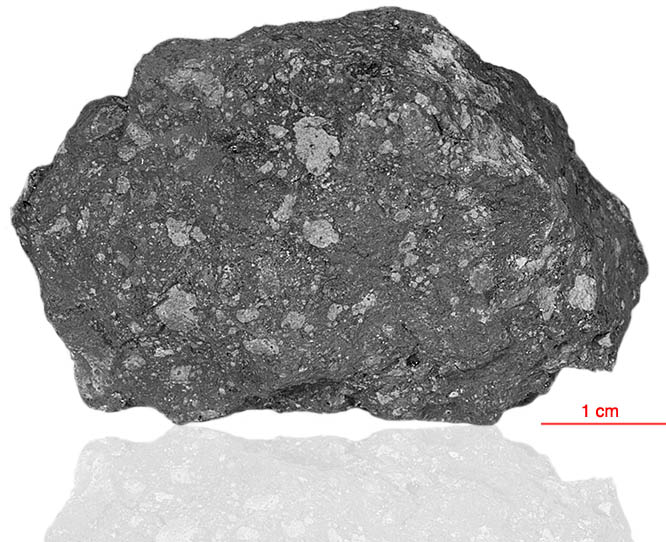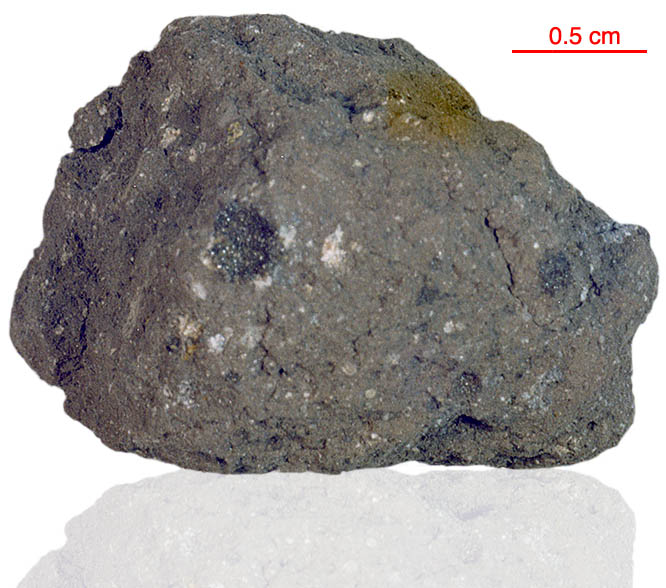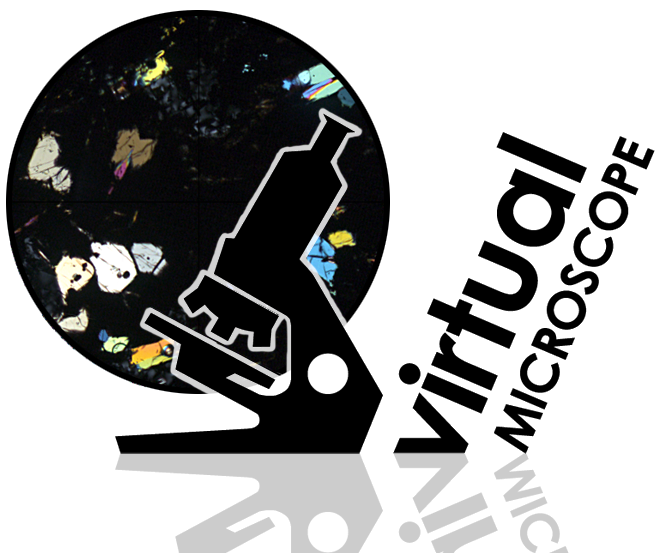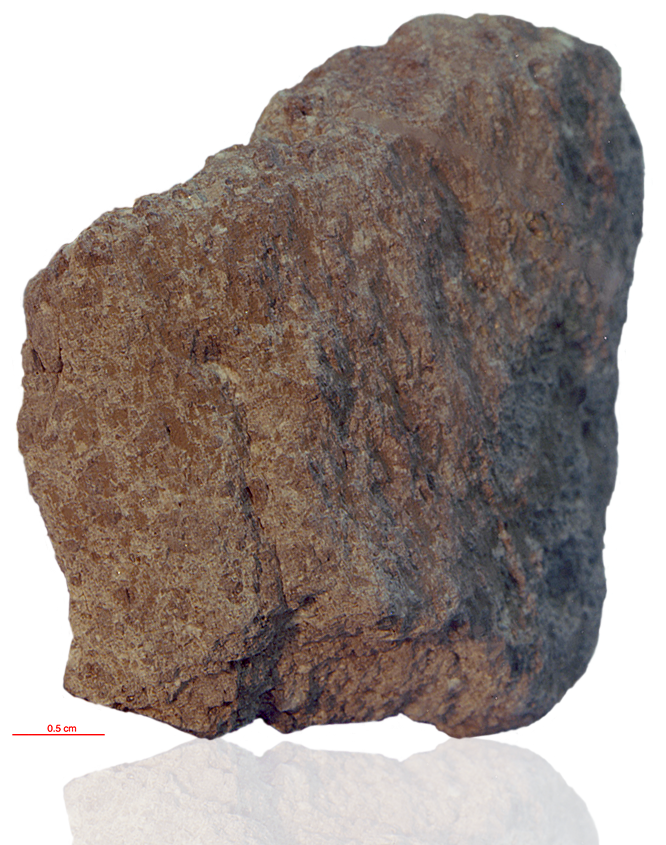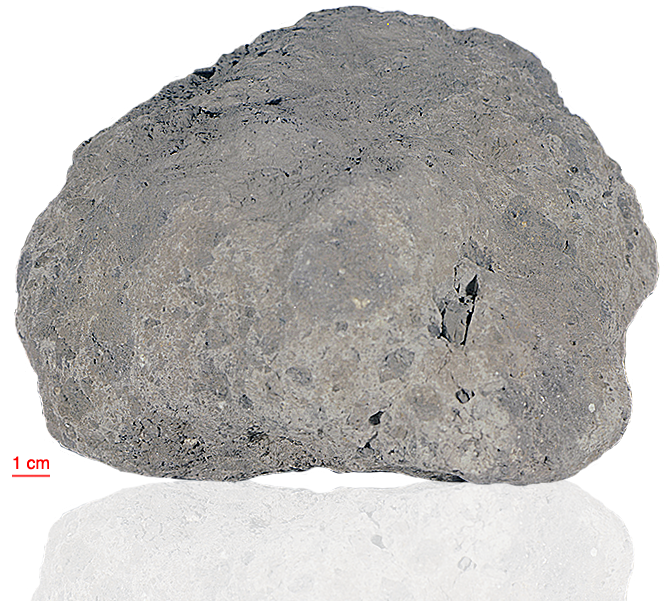
Fact sheet
14321 is a clastic rock with a variety of lithic and microbreccia clasts. It contains 30% clasts. Because of its large size it has been affectionately been called "Big Bertha". The matrix of this sample is crystalline, moderately coherent and the result of sintering in hot ejecta blanket without digestion of clasts. Other authors attribute the recrystallisation of the matrix as due to “shock sintering”. The majority of the non-breccia clasts are aluminous basalts. Some are referred to as olivine vitrophyre. Only a small number of possibly-pristine plutonic rock fragments have been found and none of these are norite or ferroan anorthosite.
14321 weighed 8898 grams before analysis. The breccia matrix has not been well dated although 3.93 and 4.06 billion year ages are reported (Ar/Ar). Individual basalt clasts range from 3.84-3.94 billion years old.
Further details of this and other Apollo samples are here: http://curator.jsc.nasa.gov/lunar/
The Apollo 14 landing site was in a region formed by impact-basin debris.
Most of the 42 kilograms of rocks and soil collected on Apollo 14 are breccias (rocks that are composed of fragments of other, older rocks). In some cases, the rock fragments that form a breccia are themselves breccias. Such rocks obviously have experienced complex histories with multiple generations of impact events. Some breccias were heated enough that some of the material in the rock was melted.
Apollo 14 was launched on 31 January 1971.

